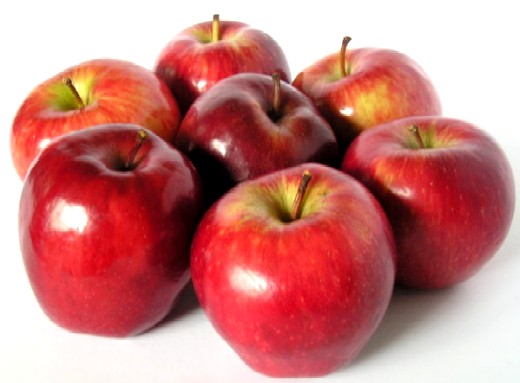Apple - Austria National Fruit
Fruit Information

Beyond fresh consumption, apples have tremendous economic and cultural significance worldwide. The global apple market is valued at billions of dollars annually, supporting millions of farmers, processors and retailers. Apples are processed into numerous products including juice, cider, vinegar, dried fruit and various food ingredients. The fruit holds deep cultural symbolism across many societies, representing knowledge, temptation, health and abundance in literature, religion and folklore. Modern food technology has enabled the development of innovative apple-based products, while traditional preparation methods like baking, preserving and fermenting continue to be popular worldwide.
| Fruit Name | Apple |
| Scientific Name | Malus Domestica |
| Country | Austria |
| Continent | Europe |
| Fruit Season | Fall |
| Fruit Color | Red-Green-Yellow |
| Fruit Size | Medium |
| Fruit Taste | Sweet-Crisp |
| Fruit Origin Region | Central Asia |
| Designation Year | 1955 |
| Peak Month | September-October |
| Economic Importance | Alpine Agriculture |
| Cultural Use | Austrian cuisine, Strudel tradition |
| Processing Type | Fresh, Juice, Schnapps, Strudel |
| Fruit Shape | Round |
| Texture | Crisp and Firm |
| Nutritional Value | Fiber, Vitamin C, Antioxidants |
| Storage Type | Cool cellar storage |
| Harvest Method | Hand picking |
| Shelf Life | 2-6 months |
| Climate Type | Temperate Alpine |
| Soil Type | Well-drained mountain soil |
| Water Requirement | Regular |
| Tree Height | 3-5 meters |
| Flowering Season | April-May |
| Fruiting Age | 3-5 years |
| Yield Per Tree | 200-400 fruits |
| Export Countries | Italy, Germany, Poland |
| Import Countries | Germany, Czech Republic |
| Medicinal Use | Digestive health, Heart health |
| Festival Association | Harvest festivals, Oktoberfest |
| Historical Significance | Alpine farming tradition |
| Alternative Names | Apfel, Pomme |
Detailed Information
Cultivation & Origin
Apples originated in Central Asia, particularly in the mountainous regions of Kazakhstan, where wild apple forests still exist today. Through trade routes and human migration, apples spread across Europe and eventually to the Americas with European colonists. The fruit has incredible genetic diversity, with over 7,500 known cultivars worldwide, each offering unique characteristics in terms of size, color, flavor profile, texture and storage capabilities. Modern apple cultivation involves sophisticated techniques including controlled atmosphere storage, integrated pest management and precision agriculture to ensure consistent quality and extended shelf life.
Nutritional Benefits
From a nutritional standpoint, apples are considered a superfruit due to their impressive array of health-promoting compounds. A medium-sized apple provides approximately 95 calories, 4 grams of dietary fiber and 14% of the daily recommended vitamin C intake. The fruit contains powerful antioxidants such as flavonoids, phenolic acids and carotenoids that help combat oxidative stress and inflammation in the body. Regular apple consumption has been associated with reduced risk of cardiovascular disease, type 2 diabetes, certain cancers and improved cognitive function. The soluble fiber pectin found in apples helps regulate blood sugar levels and promotes digestive health.
Economic & Agricultural Significance
Apple cultivation is a sophisticated agricultural practice that requires specific climatic conditions, including cold winter periods for proper dormancy and moderate summers for optimal fruit development. Major apple-producing regions include China, United States, Turkey, Poland and Italy, with production techniques varying from traditional orchards to modern high-density plantings. The industry has embraced sustainable practices including organic farming, precision irrigation and biological pest control methods. Apple breeding programs continue to develop new varieties with enhanced disease resistance, improved nutritional content and extended storage capabilities to meet evolving consumer preferences and environmental challenges.
Cultural & Modern Applications
Beyond fresh consumption, apples have tremendous economic and cultural significance worldwide. The global apple market is valued at billions of dollars annually, supporting millions of farmers, processors and retailers. Apples are processed into numerous products including juice, cider, vinegar, dried fruit and various food ingredients. The fruit holds deep cultural symbolism across many societies, representing knowledge, temptation, health and abundance in literature, religion and folklore. Modern food technology has enabled the development of innovative apple-based products, while traditional preparation methods like baking, preserving and fermenting continue to be popular worldwide.